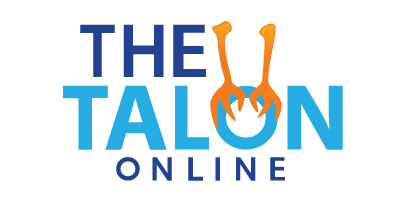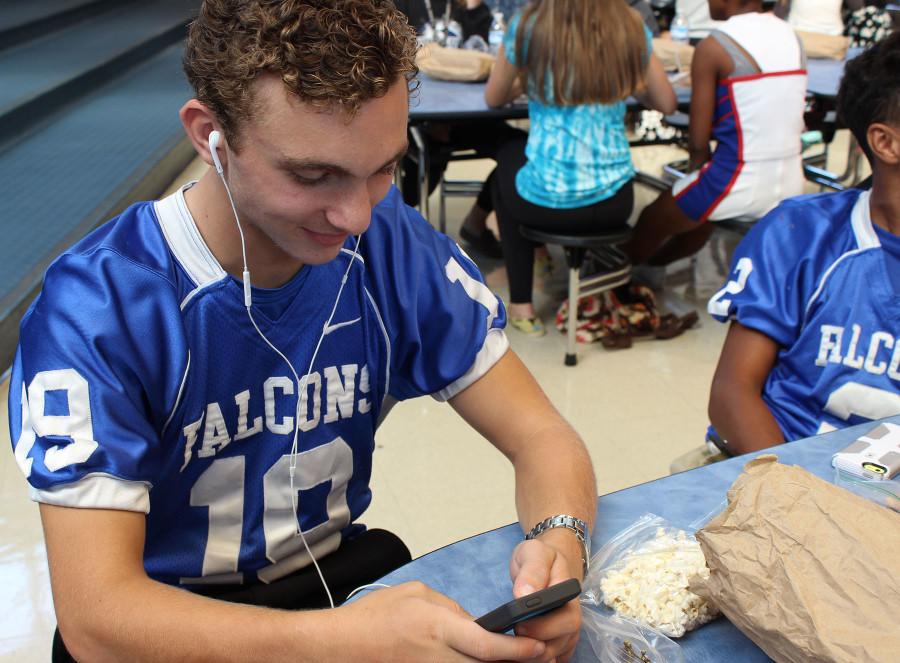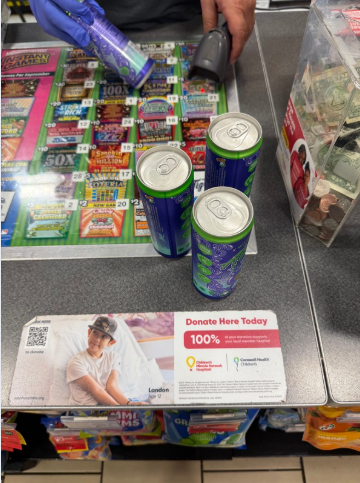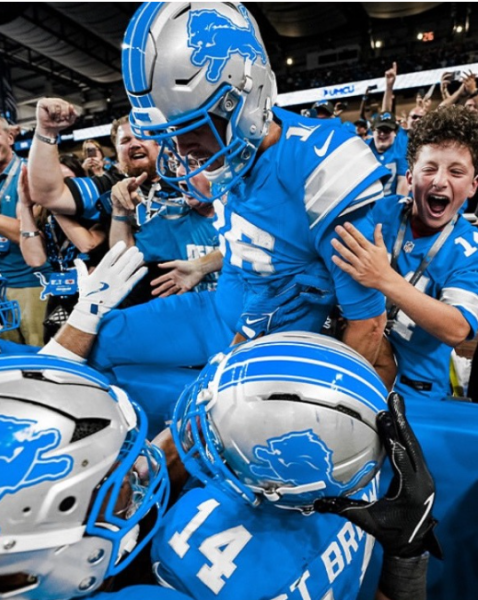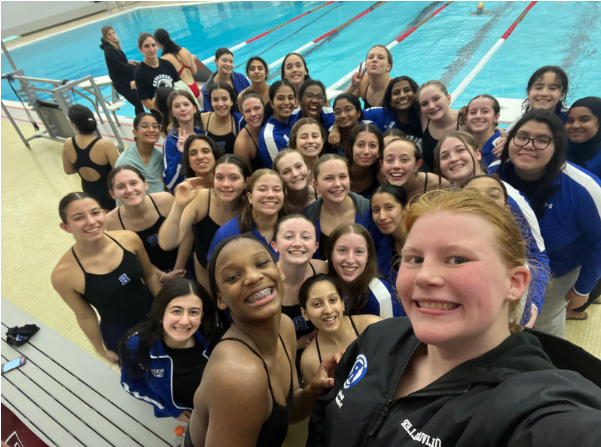Listening to music improves mood, decreases depression
Freshmen Roman Macioce jams out to Luke Bryan during second lunch. Country music is his happy place. “I love the messages and the beats.” Macioce said.
September 27, 2015
Junior Melanie Kelley goes straight from school to band practice. She gets home at 5:30 every night. With hours of homework ahead of her, she really needs to focus. Melanie grabs her iPhone and plugs in her earbuds and starts work with the soft sounds of Day Wave echoing through her mind.
“My favorite kind of music is Indie; I like how spacey it is and how it makes me feel,” Kelley said. “It makes me feel very happy and unique and it influences my life in many ways, including the way I dress and the art I make.”
In contrast, students enjoy country, rap, electronica and more, and cite music a positive influence on their lives. According to HealtyChildren.org, “An analysis of five studies on music for depression concluded that music therapy is not only acceptable for depressed patients, but it actually helps improve their moods.”
“I think that some kids like certain music because, either they like the beat of it, or they like the lyrics,” assistant principal Mr. Pasquale Cusumano said. “Some kids don’t even listen to the lyrics, they just like the beat. I think it’s not what type of music, I think it’s whatever makes that person feel good when they listen to it.”
Depending on who it is, music can have a strong influence on the person. Senior Ayanna Wyattenjoys listening to rap and dance music.
“Rap motivates me to get money and dance music makes me express my emotions,” Wyatt said. “I can let loose and everything. Music can help other people with times they’re going through. If someone is having a hard time, maybe that song can explain everything.”
Music influences people through the messages it portrays and the beat it incorporates. Each person feels every genre of music in their own way.
“[Music] makes me feel relaxed and like I’m in a whole new world,” senior Samaira Rosado said. “I like anything from Sam Hunt to Pee Wee Mack.”
While music can have a positive and uplifting effect on teenagers, “One in three popular songs contains explicit references to drug or alcohol use,” according to a new report in The Archives of Pediatrics and Adolescent Medicine, “That means kids are receiving about 35 references to substance abuse for every hour of music they listen to.” Depending on the person listening to the music, a potentially negative message could be perceived.
“I think there’s a lot of positive messages in rap as opposed to country,” Rosado said. “Country is more about being chill and enjoying every day, and rap just gets your mind off things.”
Mr. Cusumano understands that teenagers enjoy all kinds of music, but also sees that not all the messages are positive.
“Some of the lyrics and some of the messages are not positive, but sometimes I like the beat of it,” Mr. Cusmano said. “Some kids like the words and they like what it says. I think it doesn’t really matter, as long as the person enjoys listening to music and it puts them in the right place and mind frame and helps them be successful.”
Country music puts freshmen Roman Macioce in a positive and feel-good mood.
“I like country music because it’s easy to listen to and it’s always happy music,” Macioce said. “Rap gives me a headache sometimes because it’s always in your face.”
Junior MacKenzie Ferguson agrees. Her favorite kind of music is smooth.
“I like more mellow music because it helps me clear my head after a stressful day at school,” Ferguson said. “The messages aren’t necessarily better, but the type of music speaks to me on a deeper level. I like Lana Del Ray because her, along with many other artists like her, put me in a good and relaxed mood.”
A person’s favorite music can put him or her in the right mindset. Whether they’re trying to get homework done, or going out to a party, music can play a big role in teenagers’ daily lives and influences people every day.
“There’s research out there that says that music is the only thing that opens up all parts of your brain,” Mr. Cusmano said. “It helps teenagers, it helps students, it helps everybody just kind of cope with what’s going on with the day. If it’s a stressful day, it puts people in a good mood and it helps them deal with stress, and anything that happens in the workforce or at school.”
